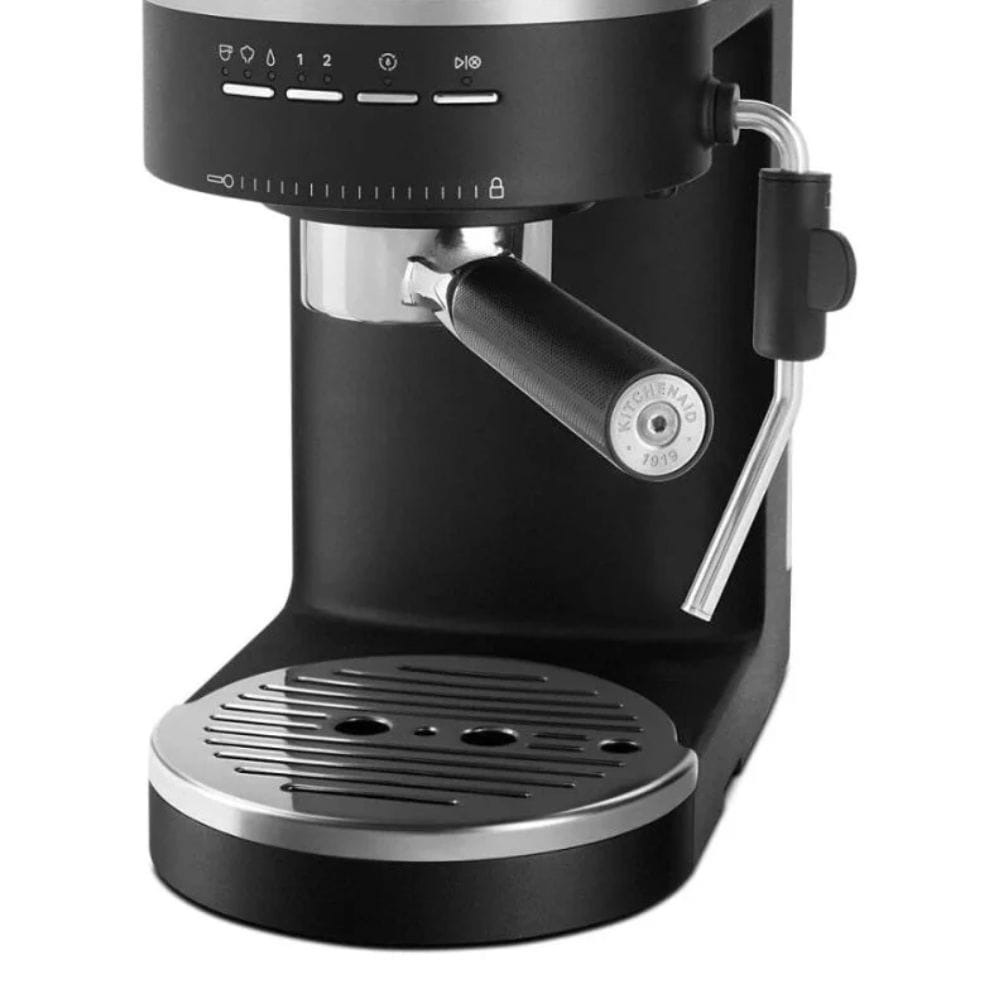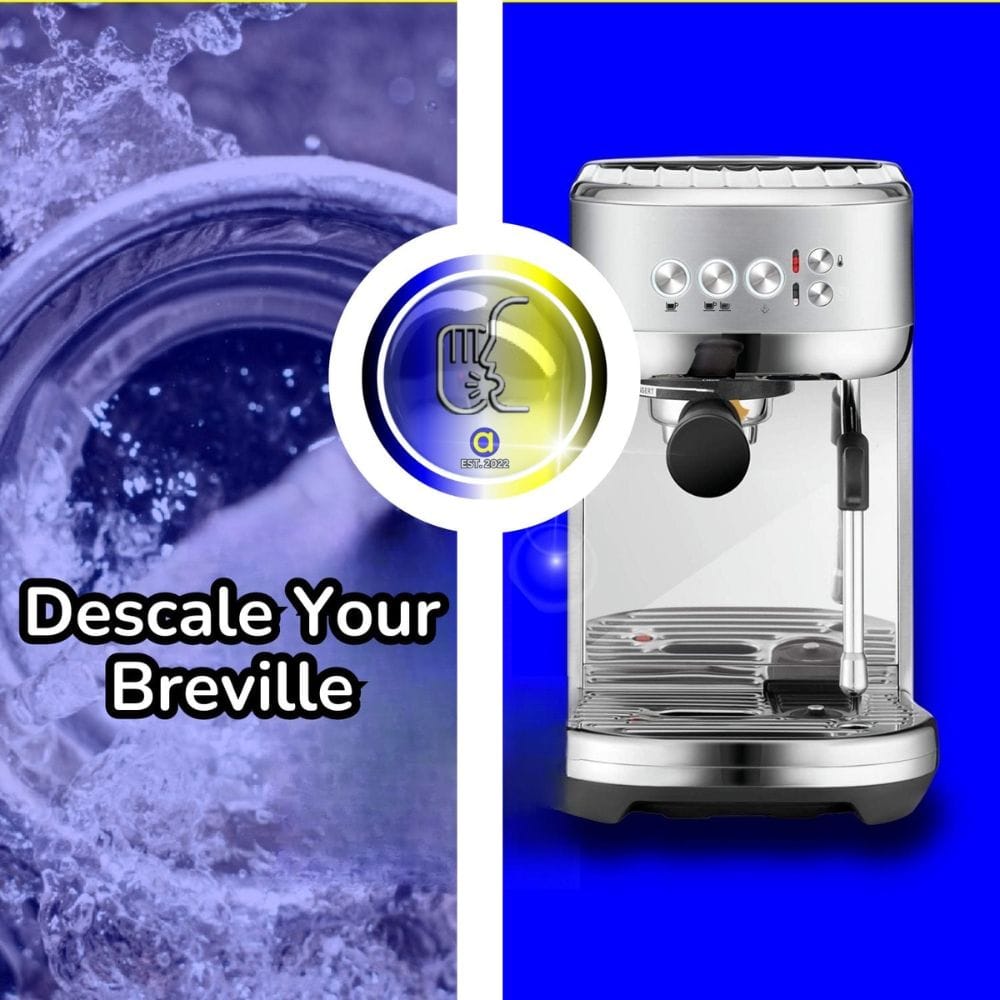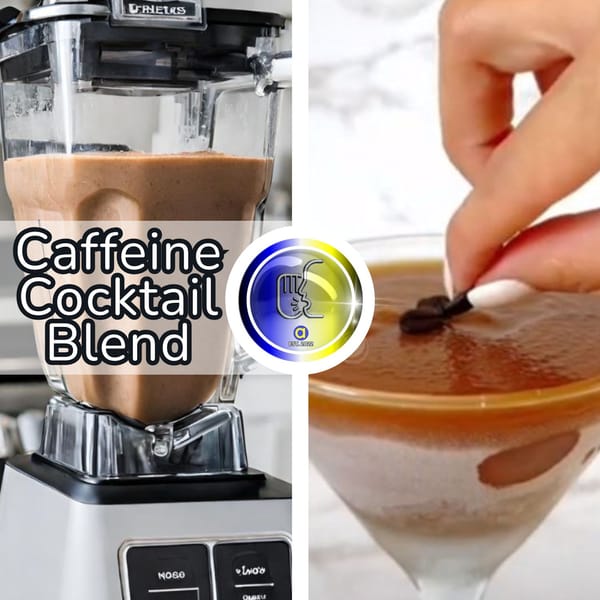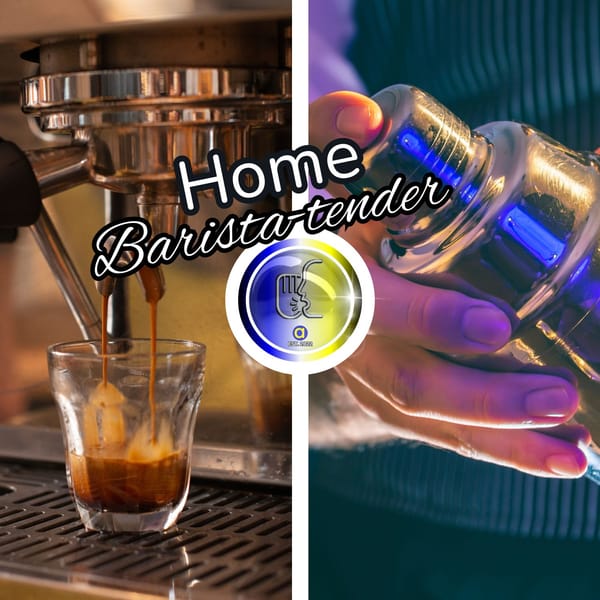Embarking on the journey of crafting the perfect espresso at home can be as thrilling as it is daunting. With a myriad of machines on the market, it's essential for beginners to find an espresso maker that's not only user-friendly but also capable of producing that rich, aromatic cup of coffee that can turn a morning routine into a cherished ritual. This comprehensive guide is designed to demystify the process and help you select the best espresso machine for your budding barista skills.
Understanding Espresso Machines: A Beginner's Primer
When you're new to the world of espresso, the terminology alone can be overwhelming. Espresso machines for beginners should offer a balance between simplicity and the ability to grow with your barista skills. A good espresso machine for a novice should not require a steep learning curve but should still allow for some degree of customization as you become more comfortable with the process.

Semi-Automatic Espresso Machines: The Learning Curve
Semi-automatic espresso machines are often recommended for beginners who are serious about learning the craft of espresso. These machines require you to grind your own coffee beans, tamp the espresso, and control the brew time. While this might sound intimidating, semi-automatic machines like the Breville Bambino Plus offer user-friendly interfaces that guide you through the process, making them a great starting point for those willing to invest time in learning.

Super Automatic Espresso Machines: The One-Stop Shop
For those who prioritize convenience, super automatic espresso machines are the way to go. These machines do everything from grinding the coffee beans to frothing milk for your latte art. They are the only machine you'll need to go from bean to cup with just a few seconds of your time. The trade-off is less control over the final product, but for many beginners, the ease of use is worth it.

The Role of Built-In Grinders and Milk Frothers
A built-in grinder ensures that you're working with the freshest possible coffee grounds, which is essential for great espresso. Machines with this feature, like many Breville machines, save on counter space and the need for a separate grinder. Milk frothers and steam wands are also important for those who enjoy milk-based drinks. Look for an espresso machine with an automatic steam wand if you're not confident in your milk steaming skills yet.
Choosing the Right Machine for Your Needs
When selecting an espresso machine, consider how much counter space you have and what kind of coffee drink you enjoy most. If you love milk-based drinks, an espresso machine with a good milk frothing system is essential. If you prefer straight espresso or Americanos, focus on machines that excel in brewing espresso.
Counter Space Considerations
Compact machines like the Breville Bambino Plus are perfect for small kitchens. They pack a lot of functionality into a small footprint. On the other hand, if you have more room, you might opt for a larger machine with more features, such as a dual boiler machine that can steam milk simultaneously while brewing espresso.
The Importance of Milk Texture and Frothing
Milk texture is crucial for delicious lattes and cappuccinos. Machines with automatic milk frothers take the guesswork out of frothing milk, while those with manual steam wands give you more control over the milk texture. If you're interested in latte art, a machine with a good steam wand is a must.
Key Features for the Best Espresso Experience
Certain features can make or break your home espresso experience. A drip tray is essential for keeping your workspace clean, while a water hardness test strip can help you ensure your machine stays in good working order. Additionally, adjustable grind settings are a boon for those who like to experiment with different types of coffee beans.
The Convenience of Automatic Espresso Machines
Automatic espresso machines offer pre-programmed settings that make brewing espresso as simple as pressing a button. These machines often come with built-in grinders and milk frothers, making them a convenient all-in-one solution for the beginner.
The Appeal of Semi-Automatic Machines
Semi-automatic machines strike a balance between automation and manual control. They allow you to play a more active role in the espresso-making process, which can be very rewarding as you develop your barista skills. The Breville Barista is a popular choice in this category, offering both ease of use for beginners and room to grow.

The Journey to Becoming a Home Barista
Making coffee at home is a journey, and the right espresso machine can make all the difference. Whether you're interested in brewing espresso, steaming milk, or making coffee drinks like a professional, there's a machine out there that's perfect for your level of interest and commitment.
The Significance of Pressure and Temperature in Espresso Making
Espresso making is an art that hinges on the precise balance of pressure and temperature. For beginners, understanding the role of these factors is crucial when selecting a home espresso machine. The ideal pressure for extracting a double espresso is around 9 bars, which most commercial machines easily achieve. However, for home use, ensure that the espresso machine for beginners you're considering can consistently hit this sweet spot. This consistency is what separates a mediocre shot from a café-quality one, and it's something that both semi-automatic and super automatic machines strive to deliver.
Temperature stability is another critical aspect. The best espresso is extracted when the water temperature is between 195°F and 205°F. Fluctuations can lead to under-extraction or over-extraction, affecting the flavor of your double espresso. While commercial grade machines are designed to maintain this temperature, other espresso machines for home use might struggle. Look for machines with good temperature control mechanisms, such as PID controllers, which are now becoming more common in machines targeted at beginners and home baristas.
Milk Frothing for Beginners: Achieving the Perfect Milk Froth
For many coffee enthusiasts, the ability to froth milk perfectly is non-negotiable when it comes to choosing an espresso machine. Milk-based drinks like cappuccinos and lattes require a creamy, velvety milk froth that can only be achieved with the right steam pressure and wand design. Semi-automatic espresso machines often come with a manual steam wand that gives users control over the frothing process, which can be both a challenge and a delight for beginners eager to learn the craft of milk texturing.
On the other hand, super automatic machines often feature built-in grinders and milk frothing systems, making them a convenient choice for those who prefer a more straightforward approach. These machines take the guesswork out of creating milk froth, providing consistent results at the touch of a button. Whether you're a hands-on learner or a fan of convenience, there's a home espresso machine that can help you master the art of milk frothing and elevate your home coffee experience to match that of the coffee industry's best.
Exploring the Versatility of Semi-Automatic Espresso Machines
Semi-automatic espresso machines strike a balance between control and convenience, making them an ideal choice for beginners eager to explore the art of espresso. With a semi-automatic machine, users can adjust settings like water temperature and pressure, which are crucial for extracting the perfect shot. This level of control allows for a more hands-on experience, which can be both educational and satisfying. Moreover, these machines often come with built-in grinders, ensuring that each cup of espresso is made with the freshest possible grounds, enhancing flavor and aroma.
The versatility of a semi-automatic espresso machine extends to milk-based drinks as well. Many models come equipped with steam wands that enable users to froth milk to their preferred texture, creating a wide array of beverages from lattes to cappuccinos. This feature is particularly appealing for those who enjoy the creamy richness of milk-based drinks. The ability to froth milk at home not only saves money on coffee shop visits but also allows for personalization of each drink to suit individual tastes.
The Benefits of Built-In Grinders in Espresso Machines
Having a built-in grinder in your espresso machine can be a game-changer, especially for beginners. It simplifies the process by eliminating the need for a separate grinding appliance and ensures that the coffee grounds are as fresh as possible for each brew. This is particularly important for espresso, where the freshness of the grind can significantly impact the quality of the shot. A semi-automatic espresso machine with a built-in grinder allows for a seamless transition from grinding to brewing, streamlining the coffee-making process.
For those who occasionally use pre-ground coffee, the flexibility of a semi-automatic machine with a built-in grinder is invaluable. It allows the user to switch between freshly ground beans and pre-ground coffee without compromising on convenience. This feature is especially handy when time is of the essence or when entertaining guests with different coffee preferences. Additionally, the presence of a grinder in a commercial-grade machine at home can elevate the overall espresso experience, bringing a touch of professional barista craftsmanship to your kitchen counter.

The Art of Espresso Tamping with Semi-Automatic Machines
When diving into the world of espresso, understanding the art of tamping is crucial, especially when using a semi-automatic espresso machine. Tamping refers to the process of compacting the pre-ground coffee in the portafilter, and it's a step that can make or break your espresso shot. A semi-automatic machine gives you the control to perfect this technique, which is essential for achieving a balanced extraction. By applying even pressure, you ensure that hot water passes through the coffee grounds uniformly, extracting the full flavor without over-extraction or channeling.
For beginners, mastering the tamp might seem daunting, but it's a skill that comes with practice and patience. A commercial-grade machine often comes with a tamper suited to its basket size, allowing for a snug fit and an even tamp. Remember, the goal is to create a smooth, flat coffee bed with no air pockets. This attention to detail will pay off when you sip a rich, crema-topped espresso that boasts the perfect balance of strength and flavor. As you grow more confident with your semi-automatic espresso machine, you'll find that tamping becomes second nature, paving the way for consistently excellent espresso shots.
The Allure of Customization with Semi-Automatic Espresso Machines
Semi-automatic espresso machines strike a delightful balance between control and convenience, making them a coveted choice for coffee enthusiasts. With a semi-automatic machine, users have the freedom to adjust settings such as shot volume and water temperature, tailoring each cup to their personal taste. This level of customization is not typically found in fully automatic models, and it's a significant draw for those who wish to refine their barista skills at home. The ability to use pre-ground coffee or freshly ground beans from built-in grinders enhances the experience, offering a fresh and flavorful espresso shot every time.
Moreover, the semi-automatic espresso machine is an excellent stepping stone for beginners aspiring to operate a commercial-grade machine in the future. The hands-on approach required for operating semi-automatics—like perfecting the tamp and manually stopping the shot—prepares home baristas for the more demanding environment of a professional café. This makes the semi-automatic machine not just a tool for making espresso but also a valuable learning device for those who dream of crafting coffee at a higher level.

Crafting Superior Milk-Based Drinks with a Semi-Automatic Machine
When it comes to creating milk-based drinks, the semi-automatic espresso machine shines with its ability to produce barista-level results. The key to a velvety smooth latte or a creamy cappuccino lies in the milk frothing process. Semi-automatic machines often come with steam wands that allow users to steam and froth milk to their desired texture. This hands-on approach to milk frothing gives users the power to create microfoam that is both rich and silky, a hallmark of a well-crafted milk-based drink.
In addition to the frothing capabilities, many semi-automatic machines are equipped with built-in grinders, ensuring that each espresso shot is made with the freshest grounds for maximum flavor. This feature is particularly beneficial for milk-based drinks, as the quality of the espresso is paramount when combined with the sweetness of the milk. Whether it's a robust flat white or a delicate macchiato, a semi-automatic machine with a built-in grinder is a formidable ally in the quest for the perfect coffee creation.
Milk-based drinks like lattes and cappuccinos are staples in the coffee world, and a semi-automatic espresso machine equipped with a milk frother can elevate your home barista game. The key to these creamy concoctions lies in the milk's texture and temperature. A semi-automatic machine typically offers a steam wand that allows you to froth milk to your desired consistency, whether you're aiming for the velvety microfoam of a latte or the airy froth of a cappuccino. The control you have over the steaming process is one of the joys of using a semi-automatic machine.
However, it's not just about frothing; it's also about integrating the milk with the espresso in a harmonious blend. The built-in grinders found in some semi-automatic machines ensure that your coffee is as fresh as possible, providing a robust foundation for your milk-based drinks. By grinding your beans moments before brewing, you capture the coffee's full-bodied flavor, which pairs beautifully with the sweetness of well-frothed milk. With a semi-automatic machine, you're not just making a drink; you're crafting an experience, one that rivals the creations of your favorite café.
The Convenience of Pre-Ground Coffee with Semi-Automatic Machines
Semi-automatic espresso machines offer a balance between control and convenience, which is particularly appealing when using pre-ground coffee. For beginners, the prospect of grinding beans to the perfect consistency can be daunting. A semi-automatic machine allows users to skip this step without compromising the quality of their espresso. By using high-quality pre-ground coffee, you can still enjoy a rich and flavorful espresso shot, making the process more approachable for those new to the craft of home brewing.
Moreover, the compatibility with pre-ground coffee opens up a world of flavors and blends that might not be readily available in whole bean form. This feature is especially beneficial for those who wish to explore different roasts and origins without investing in a commercial grade machine with built-in grinders. Semi-automatic machines provide the flexibility to experiment with various pre-ground options, helping users to refine their palate and discover their preferred espresso taste profiles.

The Edge of Commercial Grade Machines for Home Use
Bringing a commercial grade machine into your home might seem like an extravagance, but for espresso aficionados, it's a worthy investment. A commercial grade semi-automatic espresso machine is designed to withstand the rigors of heavy use, ensuring durability and consistency in every shot. These machines typically come with high-performance components, such as superior heating systems and robust pumps that deliver the optimal pressure needed for a perfect extraction.
The transition from a basic model to a commercial grade semi-automatic machine can elevate the quality of milk-based drinks to professional standards. The steam wands on these machines are often more powerful and offer better control, which is crucial for creating microfoam with the right texture for lattes and cappuccinos. While the price point may be higher, the long-term benefits of owning a machine that can replicate the coffee shop experience at home are immeasurable for enthusiasts looking to indulge in their passion for espresso.
The Impact of Water Quality on Espresso Flavor
When diving into the world of espresso, the quality of water used is often an overlooked component. However, it's a critical factor that can significantly affect the taste of your espresso. A semi-automatic espresso machine gives you the control to experiment with different water types, but it's essential to understand the basics. Using hard water can lead to mineral buildup, which not only alters the flavor profile of your milk-based drinks but can also harm the machine's longevity. Soft water, while gentler on the machine, may not extract the coffee flavors as effectively as slightly harder water.
To strike the perfect balance, many coffee aficionados recommend using filtered or bottled water with a balanced mineral content. This ensures that your semi-automatic machine operates smoothly and your espresso has a clean, unadulterated taste. Remember, the water you use should be as high quality as the pre-ground coffee or beans you choose. Some semi-automatic machines come with built-in water filters, but if yours doesn't, consider investing in a separate water filtration system to enhance your espresso experience.
The Role of Machine Maintenance in Espresso Quality
Maintaining your semi-automatic espresso machine is not just about keeping it running; it's about ensuring the quality of every cup. Regular cleaning is crucial, as coffee oils and residues can accumulate over time, affecting the taste of your milk-based drinks. Each part of the machine, from the built-in grinders to the milk frothing wand, requires attention. For instance, failing to clean the grinder can result in stale-tasting coffee, as old grounds mix with fresh ones. Similarly, a dirty frothing wand can spoil the texture and taste of milk.
Moreover, semi-automatic machines benefit from a consistent maintenance schedule, which includes descaling to remove mineral deposits. This is especially important if you use pre-ground coffee, as the fine particles can clog the machine's inner workings. By adhering to a regular maintenance routine, you not only extend the life of your semi-automatic espresso machine but also ensure that each espresso shot you pull is of the highest possible quality. After all, the best-tasting espresso comes from a machine that's cared for with as much attention as the coffee itself.
The Art of Dialing In Your Semi-Automatic Espresso Machine
When it comes to mastering the semi-automatic espresso machine, the process of "dialing in" is crucial. This term refers to the fine-tuning of grind size, dose, and tamp pressure to achieve the perfect shot of espresso. For beginners, understanding that even the slightest adjustment can significantly affect the taste is essential. With a semi-automatic machine, users have the power to experiment with these variables, which can be both exciting and daunting. The key is to start with a consistent dose and adjust the grind size to reach the desired extraction time, typically between 25-30 seconds for a balanced flavor profile.
The beauty of semi-automatic machines lies in their ability to accommodate both pre-ground coffee and freshly ground beans from built-in grinders. While pre-ground coffee offers convenience, using a built-in grinder allows for the freshest possible shot, as coffee begins to lose its flavor shortly after grinding. By taking advantage of a semi-automatic machine's built-in grinder, you can grind on demand, ensuring maximum freshness and a more robust flavor. This feature is particularly beneficial for milk-based drinks, where the espresso's quality significantly impacts the final taste.
Enhancing Milk-Based Drinks with a Semi-Automatic Machine
Creating milk-based drinks with a semi-automatic machine can be a rewarding experience for any coffee enthusiast. The key to a velvety smooth latte or a creamy cappuccino lies in the milk frothing process. Semi-automatic machines often come with a steam wand that allows for manual frothing, giving users control over the milk's temperature and texture. Achieving the perfect microfoam requires practice, but it's an attainable skill that can elevate your home barista game. The steam wand's pressure and angle are critical factors, and with a semi-automatic machine, you can refine your technique with each use.
Moreover, the integration of built-in grinders in semi-automatic machines plays a pivotal role in enhancing the flavor of milk-based drinks. Freshly ground beans ensure that the espresso base of your drink is rich and full-bodied, which is essential when combined with milk. The grinder's settings can be adjusted to suit the beans and the drink you're aiming to create, whether it's a bold ristretto for a flat white or a smoother espresso for a latte. With a semi-automatic machine, the journey from bean to cup is in your hands, allowing for a tailored experience that ready-made or pre-ground coffee options simply cannot match.
The Evolution of Semi-Automatic Espresso Machines
Semi-automatic espresso machines have come a long way since their inception, offering a balance of control and convenience that appeals to coffee aficionados and novices alike. These machines allow users to grind their beans with built-in grinders, ensuring a fresh and flavorful shot every time. The evolution of these machines has been marked by technological advancements that enhance the user experience without compromising the artisanal aspect of espresso making.
The latest models of semi-automatic machines boast features that cater to the specific needs of users. For instance, programmable settings enable the memorization of preferred brewing times and temperatures, while improved steam wands offer better control over milk frothing for milk-based drinks. The integration of these features ensures that even beginners can achieve a barista-level espresso at home, with the added satisfaction of being involved in the brewing process.
The Synergy of Pre-Ground Coffee and Semi-Automatic Machines
While the purist might argue in favor of whole beans, the use of pre-ground coffee with semi-automatic machines presents a compelling case for those seeking convenience without a significant sacrifice in quality. Pre-ground coffee can be a practical choice for busy individuals or those still honing their grinding skills. The key is to select high-quality pre-ground coffee that complements the capabilities of the semi-automatic machine.
Semi-automatic machines are often forgiving with pre-ground coffee, especially when they come with adjustable settings that allow the user to fine-tune the extraction process. This flexibility means that even with pre-ground coffee, users can experiment with different tamping pressures and extraction times to achieve a desirable espresso shot. The result is a harmonious blend of ease and personalization, making semi-automatic machines a versatile choice for espresso lovers at any skill level.

The Art of Espresso Shot Consistency with Semi-Automatic Machines
Espresso enthusiasts know that consistency is key to a perfect cup every time. A semi-automatic espresso machine offers the control necessary to achieve this. With a semi-automatic machine, users can fine-tune their grind size, tamp pressure, and extraction time, leading to a more consistent espresso shot. This hands-on approach is ideal for those who appreciate the ritual of espresso making and want to replicate their favorite coffee shop experience at home. By mastering these variables, you can ensure that each shot of espresso has the same depth of flavor and richness, providing a solid foundation for a variety of milk-based drinks.
Moreover, the use of pre-ground coffee can be a starting point for beginners to understand the importance of coffee freshness and grind size without the need for built-in grinders. As users become more experienced, they may choose to invest in a separate grinder to take their espresso shots to the next level. However, the semi-automatic machine's flexibility allows for both pre-ground coffee and freshly ground beans, accommodating the user's growing skills and preferences. This adaptability makes the semi-automatic espresso machine a valuable tool for both novices and seasoned baristas aiming for shot consistency.
The Importance of a Quality Tamper for Semi-Automatic Espresso Machines
When it comes to creating the perfect espresso with a semi-automatic machine, the importance of a quality tamper cannot be overstated. Tamping is the act of compressing the coffee grounds into the portafilter, and it plays a crucial role in achieving an even and balanced extraction. A well-crafted tamper fits snugly against the sides of the portafilter, allowing for a uniform tamp that prevents channeling, where water bypasses some of the coffee grounds. This ensures that each particle of coffee is evenly saturated, contributing to the rich and full-bodied flavor that is characteristic of expertly crafted milk-based drinks.
Investing in a high-quality tamper is a small but significant step towards elevating your espresso-making game. While semi-automatic machines often come with a basic tamper, upgrading to a more ergonomic and precisely weighted option can make a noticeable difference. For those with built-in grinders, the freshness of the grind combined with the precision of a quality tamper can transform the espresso experience. It's these seemingly minor details that, when optimized, can turn a good espresso shot into a great one, and by extension, enhance the overall quality of any milk-based drink you create.
The Precision of Semi-Automatic Espresso Machines in Coffee Extraction
Semi-automatic espresso machines are renowned for their precision in coffee extraction, a critical factor in achieving the perfect espresso shot. The control over the extraction process allows users to fine-tune the flavor profile of their espresso, making it possible to highlight the unique characteristics of different coffee beans. With a semi-automatic machine, enthusiasts can experiment with variables such as grind size, tamping pressure, and extraction time. This hands-on approach not only educates the user on the nuances of espresso making but also leads to a more personalized coffee experience.
Moreover, the precision offered by semi-automatic espresso machines is not just about personal preference; it's about consistency. Once the ideal settings are discovered, these machines can replicate the same shot quality time and again, ensuring that your morning espresso is as delightful as the one from the day before. This consistency is particularly important for milk-based drinks, where the espresso's flavor needs to stand out amidst the creaminess of the milk. A semi-automatic machine gives you the control to maintain that perfect balance.
The Integration of Built-In Grinders in Semi-Automatic Espresso Machines
The integration of built-in grinders in semi-automatic espresso machines is a game-changer for coffee aficionados. The convenience of having a grinder within the machine itself cannot be overstated. It saves on counter space and ensures that the coffee grounds are as fresh as possible, which is paramount for a rich and aromatic espresso. With a built-in grinder, the process of making an espresso becomes more streamlined, allowing for a quicker and more efficient brewing routine, especially during those busy mornings.
Furthermore, the use of pre-ground coffee, while convenient, often falls short in terms of flavor when compared to freshly ground beans. A semi-automatic espresso machine with a built-in grinder bridges this gap by providing the freshness of a coffee shop experience in the comfort of your own home. The ability to grind beans to the precise coarseness needed for the machine's pressure and temperature specifications means that each cup of espresso or milk-based drink is crafted to perfection, with all the depth and nuance of flavor that coffee connoisseurs cherish.

The Art of Choosing the Right Coffee Beans for Your Semi-Automatic Espresso Machine
When it comes to creating the perfect espresso with your semi-automatic machine, the choice of coffee beans is as crucial as the machine itself. The right beans can enhance the flavor profile of your milk-based drinks and ensure that the built-in grinders of your semi-automatic espresso machine are put to good use. Opt for beans that are freshly roasted and offer a flavor that complements the natural sweetness of milk. Whether you're crafting a robust espresso or a creamy latte, the beans you choose will lay the foundation for a delightful coffee experience.
Moreover, the compatibility of your coffee beans with pre-ground coffee options should not be overlooked. While semi-automatic machines offer the convenience of using pre-ground coffee, the freshness and quality of the beans can significantly impact the end result. For those who value freshness but seek convenience, look for high-quality pre-ground coffee that has been recently ground and properly stored. This ensures that even without the use of built-in grinders, your semi-automatic espresso machine can still produce a superior cup of coffee.
The Importance of Water Filtration in Semi-Automatic Espresso Machines
The quality of water used in semi-automatic espresso machines is a pivotal factor that often goes unnoticed. Hard water can lead to mineral buildup, affecting both the machine's performance and the taste of your milk-based drinks. It's essential to use filtered water or invest in a semi-automatic machine with a built-in water filtration system. This not only prolongs the lifespan of your machine by preventing scale but also ensures that each espresso shot is as pure and flavorful as possible, allowing the true essence of the coffee to shine through.
Furthermore, the temperature stability provided by semi-automatic machines with advanced water heating systems can make a significant difference in your espresso's quality. Consistent water temperature is key to extracting the perfect shot, and semi-automatic machines equipped with PID controllers can maintain the ideal temperature throughout the brewing process. This precision, combined with quality water, means that each espresso shot will be consistently delicious, providing a solid foundation for a variety of milk-based drinks.
The Role of Espresso Grinders
A good espresso grinder is just as important as the machine itself. Finely ground beans are the foundation of a good espresso shot. If your machine doesn't have a built-in grinder, investing in a separate grinder is a must. Look for one with multiple grind settings to give you the flexibility to experiment with different coffee beans.
The Art of Milk Frothing
Milk frothing is an art in itself. Whether you're using an automatic steam wand or learning to steam milk manually, the right technique will result in perfectly frothed milk that can elevate your coffee drink to the next level. Practice makes perfect, and many machines come with a milk jug specifically designed for frothing.
Practical Considerations: Maintenance and Upkeep
Every espresso machine requires some level of maintenance to keep it running smoothly. This includes regular cleaning of the drip tray, milk frother, and steam wands, as well as descaling to prevent mineral buildup. Some machines come with indicators that tell you when it's time to perform these tasks.
The Importance of Regular Cleaning
Keeping your espresso machine clean is crucial for both the longevity of the machine and the taste of your coffee. A dirty machine can lead to a bitter taste and reduced performance over time. Make sure to clean the drip tray, empty the espresso puck, and wipe down the machine after each use.

Descaling: An Essential Routine
Descaling is the process of removing mineral buildup from your machine's water system. It's an important routine that should be done every few months, depending on the hardness of your water. Many machines, like those from Breville, come with a water hardness test strip to help you determine how often you need to descale.
Advanced Features for the Enthusiastic Beginner
As you become more comfortable with your espresso machine, you might start looking for advanced features that can enhance your coffee-making experience. Dual wall filter baskets, for example, can help you achieve a better crema on your espresso shots. Hot water spouts are also useful for making Americanos or pre-heating your cups.
The Benefit of Dual Boiler Machines
Dual boiler machines allow you to brew espresso and steam milk simultaneously, which is a huge time-saver, especially when making multiple milk drinks. These machines are typically more expensive, but they're worth considering if you're serious about your espresso and don't want to wait between brewing and frothing.
Hot Water Spouts and Pre-Heating Cups
A hot water spout is a convenient feature that allows you to make Americanos or tea without needing a separate kettle. Pre-heating your cups is also a pro tip that can keep your coffee hotter for longer, ensuring that every sip is as enjoyable as the first.

The Final Verdict: What Machine to Buy?
After considering all the factors, the question remains: what kind of espresso machine should a beginner get? The answer depends on your personal preferences, the amount of time you're willing to invest in learning, and the space you have available. Whether you choose a semi-automatic or a super automatic espresso machine, make sure it aligns with your coffee goals and lifestyle.
The Best Espresso Machines for Beginners
The Breville Bambino Plus is a great choice for those who want a compact machine with automatic features. For a more hands-on experience, the Breville Barista offers the perfect blend of automation and manual control. Seattle Coffee Gear is a fantastic resource for testing espresso machines and finding reviews from both experts and users.
Summary
Choosing the right espresso machine as a beginner can be a complex decision, but it ultimately comes down to a balance between convenience and control. Whether you opt for a semi-automatic or a super automatic espresso machine, look for features like built-in grinders, milk frothers, and easy maintenance routines. Remember that the journey to making great espresso at home is a learning process, and the right machine can make all the difference.

FAQ Section
Q: Is it worth getting an espresso machine with a built-in grinder?
A: Yes, a built-in grinder ensures you're using the freshest grounds for your espresso, which can significantly improve the taste. It also saves space and the hassle of buying a separate grinder
Q: How often should I clean and descale my espresso machine?
A: You should clean the drip tray, milk frother, and steam wands after each use. Descaling should be done every few months, depending on the hardness of your water. Many machines come with a water hardness test strip to guide you.
Q: Can I make regular drip coffee with an espresso machine?
A: No, espresso machines are designed to make espresso shots and espresso-based drinks. If you enjoy drip coffee, you'll need a separate drip coffee maker.
RELATED: Best Espresso Machines Under $200
Does an Expensive Espresso Machine Make a Difference?







